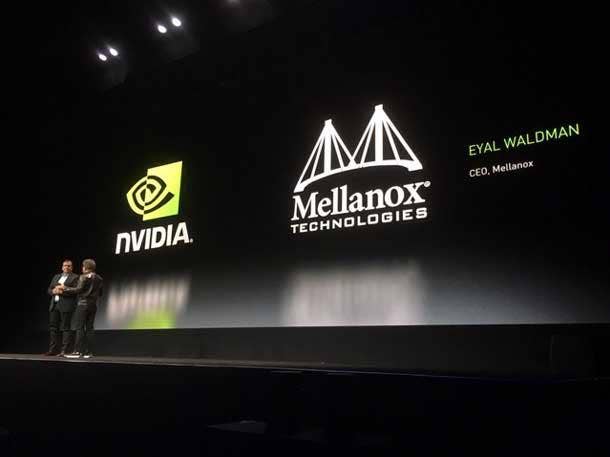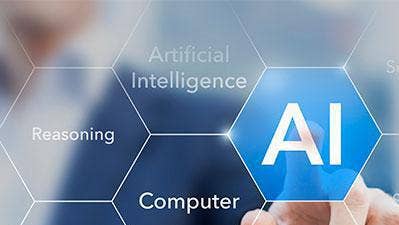6 Boldest Statements From Jensen Huang And Eyal Waldman On Nvidia-Mellanox Deal

Building On A 12-Year Partnership
Nvida CEO Jensen Huang Tuesday told attendees at the Nvidia GPU Technology Conference that his company's $6.9 billion acquisition of Mellanox is rooted in 12 years of building supercomputers together.
"If you take a look at our journey together, we started in supercomputing, and almost all the major supercomputers we worked on, you guys worked on as well," said Huang in a brief exchange with Waldman at this week's Nvidia GPU Technology Conference in San Jose, Calif. “And our engineers worked close hand-in-hand. And the reason for that is, when you have all these different compute nodes working together, the synchronization of the information, the sharing of the information, into one large simulation is very intensive."
Nvidia has characterized the Mellanox acquisition -- which is expected to be completed by the end of the year -- as a high performance computing game changer.
In fact, Huang sees the combination as key to fueling a new era in artificial intelligence and data science applications with billions of simultaneous users. That is going to require a new holistic architecture that connect vast numbers of fast computing nodes over intelligent network fabrics to form a giant data center scale compute engine, said Huang.

Waldman On The Data Explosion
We're seeing a great growth in data. An exponential growth. And we're also starting to see that the old program of program-centric data center is changing into data-centric data center, which basically means that data will flow and create the programming. Whereas in the past you would program using the data, the data will start creating the program using the data itself. These are things that we can work out and actually get very synergistic architecture solutions for the future for the data center.

Huang On The Nvidia-Mellanox Journey Together
If you take a look at our journey together, we started in supercomputing, and almost all the major supercomputers we worked on, you guys worked on as well. And our engineers worked close hand-in-hand. And the reason for that is, when you have all these different compute nodes working together, the synchronization of the information, the sharing of the information, into one large simulation is very intensive. And we're seeing this happening now in hyperscale data centers. And we're seeing the same thing happening in enterprises. What are you guys seeing? And what are the dynamics?

Waldman On The Hyperscale Compute Engine Advantage
I think if you look at the big hyperscalars, one of their big advantages is their compute engine, the supercomputer they have in their data centers worldwide to serve hundreds of millions of people simultaneously. What we do is actually connect the compute to compute and compute to storage in the most efficient way with the lowest latency and the highest scalability. This is why we increase the productivity, the efficiency, of [customers] significantly.
One of the things we've showed here is that latency is one of the most important parameters in terms of scalability and efficiency. But latency, that's what we do best. We have the lowest latency interconnect to the platform with InfiniBand and Ethernet, and we're just improving this now with [200-Gbits-per-second] 200 HDR InfiniBand and also 200 and 400 Gbit Ethernet. And we'll continue to develop more synergistic products in the future.

Huang On Mellanox Acceleration
The latency of your systems is truly incredible. The other thing that you were well ahead of at the time was the concept of CPU offloading, RDMA. And we also felt the same way, of course. But we didn't call it CPU offloading. We called it acceleration. But in a way, you were a network accelerating company all along.

Waldman On The AI OffLoad Machine
So we found out that doing programs is great with the CPU, but then doing very tedious, high-I/O operations by the CPU was very inefficient. So we took this path to Mellanox and we do it mainly on the end points on Ethernet and InfiniBand. Then what we found out is, we can put computing inside the switch. And this is something we've done with Nvidia. … We have an AI (artificial intelligence) offload machine, floating point machines, inside the switch to increase the efficiency of artificial intelligence programs in the data center. We've seen some very interesting results. I don't know if you've shown this recently. But we are seeing more and more offloading we can take from the CPU and GPU into the network and then synergize this into the whole data center solution for AI.

Huang On The Path Forward For Nvidia Mellanox
That's our path forward. We've gone way beyond the time when CPU scaling is going to progress. And now that it's slowed down, we have to (accelerate) every workload that we can, and of course moving it into an (GPU) accelerator is one thing, but moving it into a network is completely another thing. But we should do both.